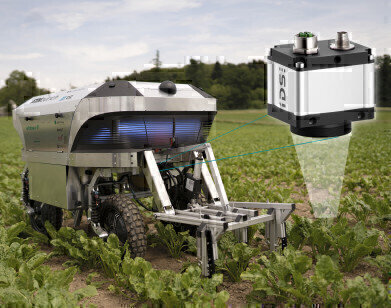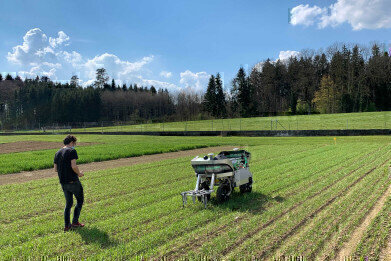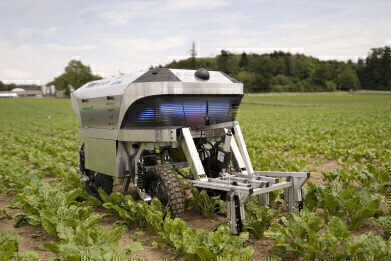Environmental Laboratory
Intelligent Robot with IDS Camera Eliminates the Need for Herbicides
Apr 12 2022
Plant protection products are an integral part of today's agriculture. They are intended to protect crops and keep out weeds and pests. In 2019, according to the German Federal Environment Agency, the group of herbicides (weed killers) accounted for 50.6 % of the plant protection products dispensed. Unfortunately, in addition to the desired effect, these also harbour numerous risks for humans and the environment. In this way, they endanger biodiversity and water quality of adjacent areas. Biological diversity is declining. The Rowesys student project was launched in summer 2019 at the Swiss Federal Institute of Technology (ETH) Zurich with the aim of developing a robot for more sustainable agriculture without the excessive use of herbicides. On the underside of the robot is a uEye+ industrial camera with GigE Vision Interface from IDS Imaging Development Systems GmbH.
The team constructed a functional prototype called Rosie within only nine months. The robot consists of an outer shell that protects all components inside the housing. Its interior has two powerful batteries and a control box that contains most of the system's electrical components. A structure made of aluminium profiles forms the skeleton of the robot. With the help of four small, individually sprung goose-foot spades, Rosie removes weeds from between the sown plants in a purely mechanical way. They are pulled through the soil behind the robot to the left and right of the rows of plants. This means that the use of environmentally harmful herbicides can be dispensed with. In order to navigate autonomously through a field, Rosie must first be able to perceive the exact position as well as the end of a row of plants. For this purpose, the robot has several cameras and sensors as well as algorithms for path and position recognition.
Another aim is to observe plants over a longer period of time in order to provide the farmer or breeder e.g. with information on their growth behaviour. For this purpose, Rosie was additionally equipped with a robust IDS industrial camera. "Using the images, we distinguish between weeds and crops for herbicide-free weed removal." An active tool below the robot should then also be able to remove weeds directly around the plants. "In the future, much more information will also be extracted with the help of intelligent image processing - from data for yield estimation to early detection of plant diseases," explains Timo Schönegg, ETH Zurich - Rowesys focus project.
The uEye FA camera is mounted on the underside of the robot and is oriented vertically downwards. While the robot drives through the fields, it captures the plants from the top. By means of neural networks, the above analyses can be carried out depending on the application. In the future, this information should help farmers to be able to take measures at an early stage, e.g. against fungal infestation. Rosie has so far been used for field trials in sugar beet, wheat and maize fields.
Digital Edition
IET 34.2 March 2024
April 2024
Gas Detection - Biogas batch fermentation system for laboratory use with automatic gas analysis in real time Water/Wastewater - Upcycling sensors for sustainable nature management - Prist...
View all digital editions
Events
Apr 30 2024 Melbourne, Australia
Apr 30 2024 Birmingham, UK
May 03 2024 Seoul, South Korea
May 05 2024 Seville, Spain
May 06 2024 Minneapolis, MN, USA




















